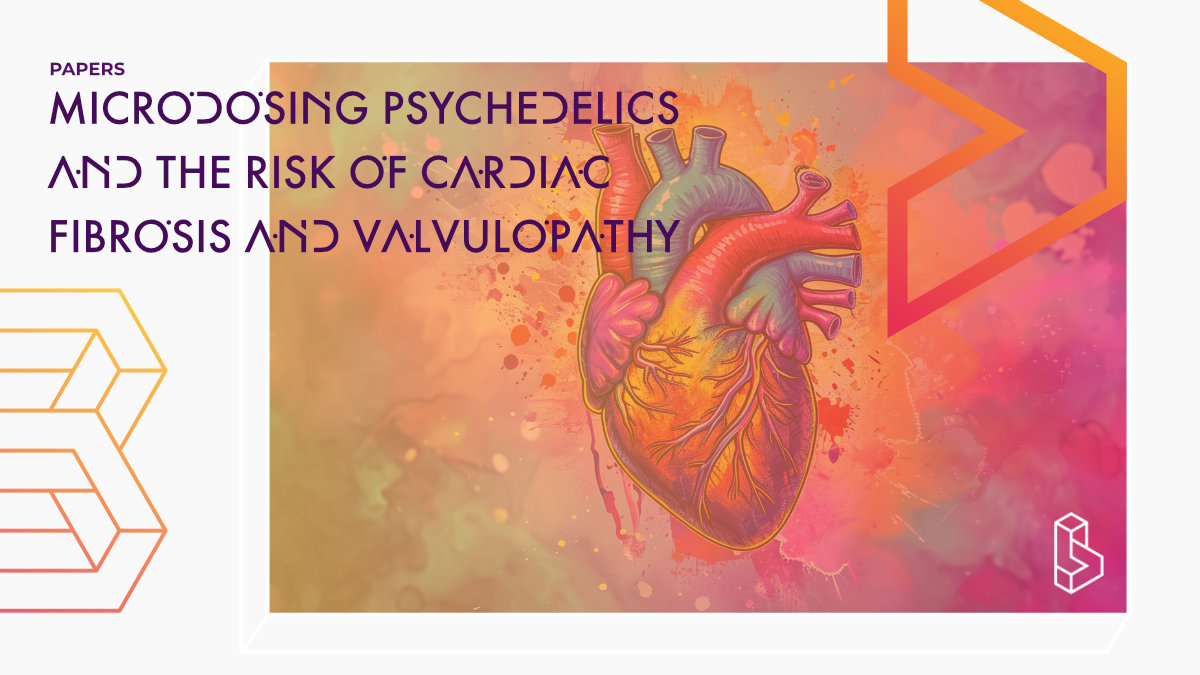This review (2023) assesses the potential long-term impact of microdosing psychedelics on cardiac health, particularly focusing on LSD and psilocybin. Despite the increasing popularity of microdosing, concerns arise due to structural similarities between these substances and medications associated with cardiac fibrosis and valvulopathy. The review emphasizes the need for future studies to evaluate the safety of prolonged microdosing and discusses the relationship between drug-induced cardiac fibrosis and the 5-HT2B receptor.
Abstract of Microdosing psychedelics and the risk of cardiac fibrosis and valvulopathy: Comparison to known cardiotoxins
“Though microdosing psychedelics has become increasingly popular, its long-term effects on cardiac health remain unknown. Microdosing most commonly involves ingesting sub-threshold doses of lysergic acid diethylamide (LSD), psilocybin, or other psychedelic drugs 2–4 times a week for at least several weeks, but potentially months or years. Concerningly, both LSD and psilocybin share structural similarities with medications which raise the risk of cardiac fibrosis and valvulopathy when taken regularly, including methysergide, pergolide, and fenfluramine. 3,4-Methylenedioxymethamphetamine, which is also reportedly used for microdosing, is likewise associated with heart valve damage when taken chronically. In this review, we evaluate the evidence that microdosing LSD, psilocybin, and other psychedelics for several months or more could raise the risk of cardiac fibrosis. We discuss the relationship between drug-induced cardiac fibrosis and the 5-HT2B receptor, and we make recommendations for evaluating the safety of microdosing psychedelics in future studies.”
Authors: Antonin Rouaud, Abigail E. Calder & Gregor Hasler
Summary of Microdosing psychedelics and the risk of cardiac fibrosis and valvulopathy: Comparison to known cardiotoxins
Microdosing psychedelics, which involves intermittently taking a sub-threshold dose of a psychedelic substance, has recently gained attention in both popular media and the scientific community. A recent review concluded that there may be a significant risk of valvular heart disease from chronic use of serotonergic psychedelics and MDMA.
The practice of microdosing
Microdosing is a method of taking small amounts of drugs to produce hallucinations. It is typically done 2 – 4 times per week for several weeks, and may impair cognitive function in some individuals.
Find this paper
https://doi.org/10.1177/02698811231225609
Open Access | Google Scholar | Backup | 🕊
Cite this paper (APA)
Rouaud, A., Calder, A. E., & Hasler, G. (2024). Microdosing psychedelics and the risk of cardiac fibrosis and valvulopathy: Comparison to known cardiotoxins. Journal of Psychopharmacology, 02698811231225609.
Study details
Compounds studied
Psilocybin
LSD
Topics studied
Microdosing
Study characteristics
Literature Review

